Maryland houses a diverse species of wildlife that includes mammals, amphibians, fish, insects, and many reptiles. However, I have always found studying amphibians to be the most enjoyable.
With frogs marching across every land except Antarctica in the world, Maryland also houses a few different species of them. Amongst them are the infamous “tree frogs”, which, despite being subspecies of aquatic frogs, have adapted to an arboreal lifestyle. These are colorful little amphibians that are gaining popularity pretty quickly among many pet enthusiasts.
Are you interested in learning more about these lucrative frogs endemic to Maryland? Then read on, as I’ll try to guide you through all the various species of tree frogs found here!
Are there tree frogs in Maryland?
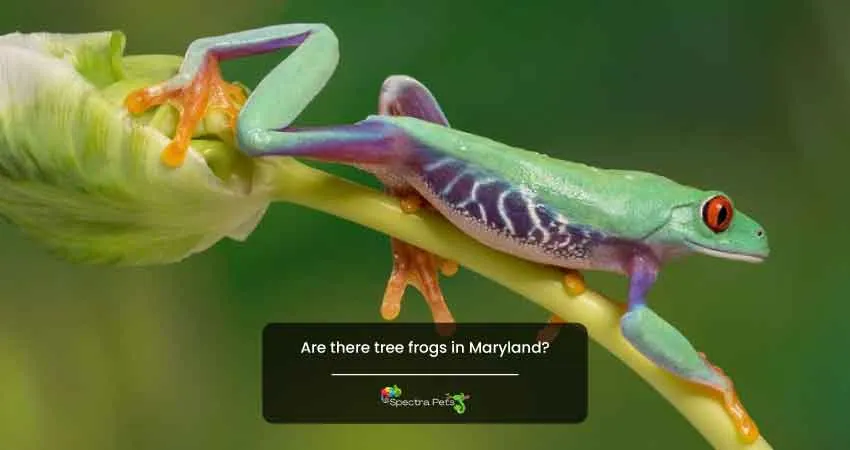
The Chesapeake Bay, which receives its water from a watershed covering more than 64,000 square miles, is located in Maryland. The rivers, creeks, ponds, and streams that make up this region are home to a wide variety of amphibians. A total of 9 different species of tree frogs can be found here in Maryland.
What kind of tree frogs live in Maryland?
There are nine different species of tree frogs that are native to Maryland. Here, I will introduce them to you along with their scientific names, sizes, lifespans, and average pricing in the state:
- Barking Tree Frog (Hyla gratiosa)
- Gray Treefrog (Hyla versicolor)
- Cope’s Gray Treefrog (Hyla chrysoscelis)
- Green Tree Frog (Hyla cinerea)
- Mountain Chorus Frog (Pseudacris brachyphona)
- New Jersey Chorus Frog (Pseudacris kalmi)
- Upland Chorus Frog (Pseudacris feriarum)
- Spring Peeper (Pseudacris crucifers)
- Eastern Cricket Frog (Acris crepitans)
1. Barking Tree Frog
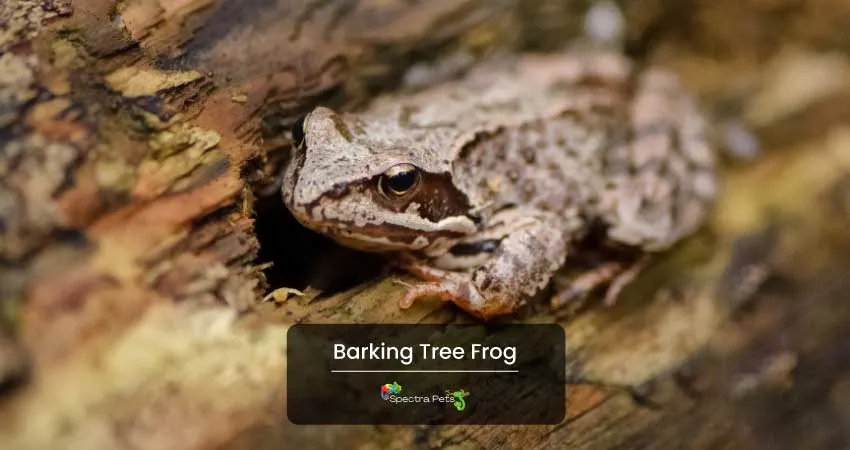
- Family: Hylidae
- Scientific name: Hyla gratiosa
- Size: up to 2.75 inches
- Longevity: 5 to 10 years
- Price in U.S. Market: up to 15$
The Barking Tree Frog is one of the largest species of tree frogs that can be found in Maryland. This species of frog is listed as threatened.
Appearance:
- This species is an expert chameleon, just like other hylid frogs. It can change its color pretty easily. The color depends on temperature, surroundings, mood, and so on. However, it will have a green hue most of the time.
- It is the largest species of tree frog found in Maryland.
- There are circular rings on its back. The back has a granular texture.
Habitat:
- In Maryland, you can find them in only some coastal counties. They can also sometimes be located in pine forests and woods.
- They spend the majority of their time on trees, although sometimes they burrow themselves underground.
2. Gray Tree Frog
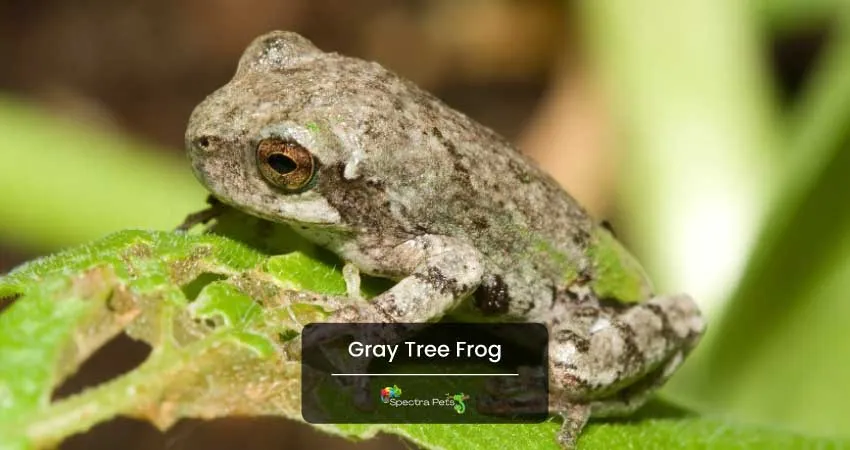
- Family: Hylidae
- Scientific name: Hyla versicolor
- Size: up to 1.25 inches
- Longevity: 7 to 10 years
- Price in U.S. Market: up to 20$
There are two species of gray tree frog in Maryland. The gray tree frog is one of them.
Appearance:
- Both the species almost look exactly the same, with the only difference being their call and their chromosome count.
- This frog usually boasts a green or gray hue, although the color might vary due to chameleon characteristics.
- Like other tree frogs, they have large toe pads. There is a yellow hue on their inner thighs.
Habitat:
- These amphibians can be spotted near vegetation that grows near shallow water bodies.
- They can be seen throughout the whole state of Maryland.
3. Cope’s Gray Tree Frog
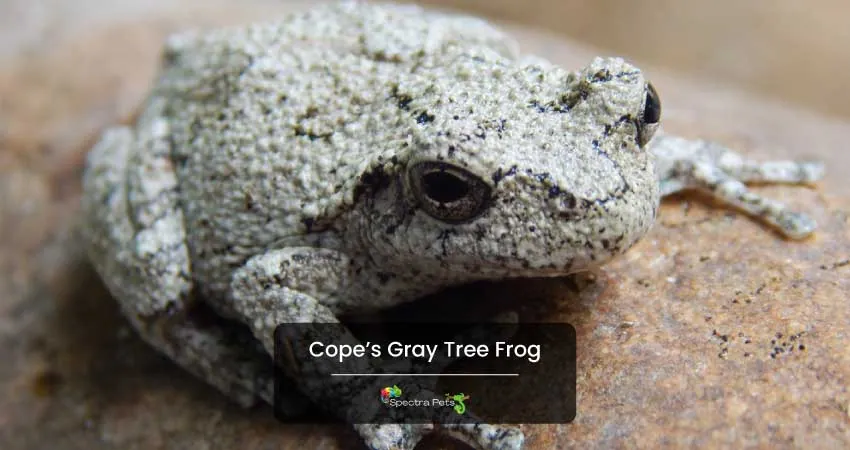
- Family: Hylidae
- Scientific name: Hyla chrysoscelis
- Size: up to 1.25 inches
- Longevity: 7 to 10 years
- Price in U.S. Market: up to 20$
Another gray tree frog variant found in Maryland is the Cope’s Gray Tree Frog. Compared to gray tree frogs, they make faster and higher-pitched calls.
Appearance:
- As mentioned in the Gray Tree Frog section, these two variants are almost indistinguishable. This variant is louder and faster at calling and has a higher chromosome count than the Gray’s.
- Their color hue is green or gray, just like the Gray’s. They can also camouflage themselves just as well as the other tree frogs.
- They also have large toe pads that provide assistance in climbing tall trees.
Habitat:
- These frogs reside in areas that consist of both wetlands and vegetation.
- They are more often seen in the Coastlands of Maryland.
4. Green Tree Frog
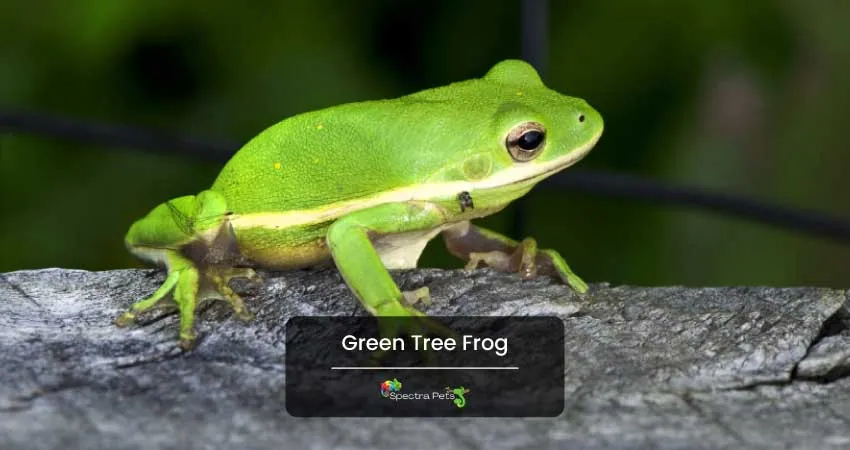
- Family: Hylidae
- Scientific name: Hyla cinerea
- Size: up to 2.5 inches
- Longevity: 2 to 6 years
- Price in U.S. Market: up to 10$
Green Tree Frogs are nocturnal frogs that have striking green coloring on their bodies. This species is beloved amongst pet enthusiasts because of its pretty appearance and easy maintenance. These amphibians like to call in groups.
Appearance:
- These anurans have a vivid green color with sometimes a yellowish hue on them. Their underbelly is white-yellowish.
- A fine whitish stripe separates their upper body from the lower body.
- Their large toe pads have adhesive characteristics and have more webbing than others which results in expertise in tree climbing.
Habitat:
- Green Tree Frogs prefer streams, swamps, and vegetation floating on water.
- They are more commonly seen in southwestern Maryland.
5. Mountain Chorus Frog
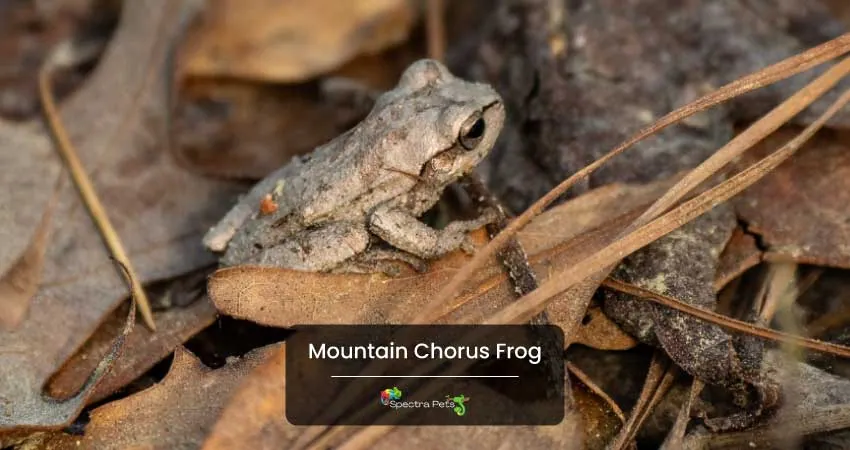
- Family: Hylidae
- Scientific name: Pseudacris brachyphona
- Size: up to 1.25 inches
- Longevity: 1 to 4 years
- Price in U.S. Market: n/a
The Mountain Chorus Frog is another endangered species of tree frog found in some parts of Maryland. This species is active both during the day and at night. However, they are difficult to spot due to their tiny size and endangered status.
Appearance:
- Despite being quite small sizewise, this particular species has a pretty robustly built body.
- Their body has a light brownish tan, with dark brown stripes running across their torso.
- This frog has a similar appearance to a Spring Peeper. However, there is a white stripe running across its lips. This is a distinctive feature that helps separate them from the Spring Peepers.
Habitat:
- This species prefers hillsides with vegetation and wet plains. They can also rarely be spotted near sewerage.
- In Maryland, there are rare sightings in Gareth and Allegany.
6. New Jersey Chorus Frog
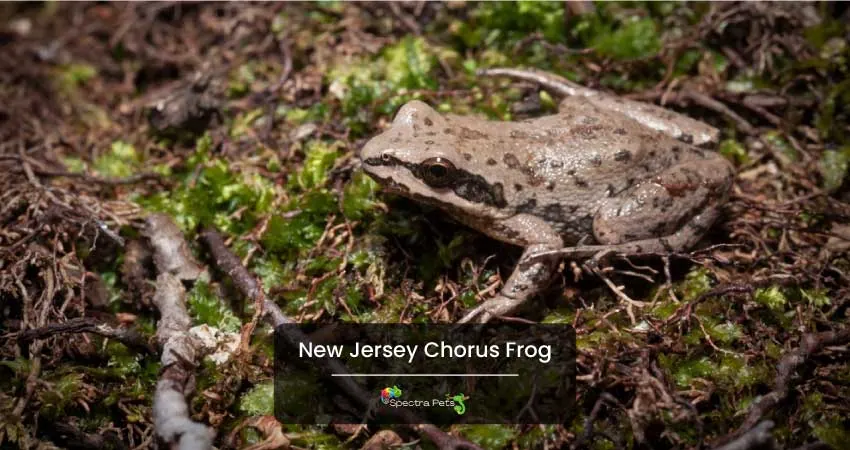
- Family: Hylidae
- Scientific name: Pseudacris kalmi
- Size: up to 1.75 inches
- Longevity: 0 to 5 years
- Price in U.S. Market: n/a
The New Jersey Chorus Frog is a chorus frog found in damp environments in Maryland. These creatures are known to call throughout the day and night. They are the species that start breeding at the earliest time of the year.
Appearance:
- This species has a pale-gray hue. Their underbelly is white.
- Three dark stripes run across the torso
- These amphibians are robustly built with a warty skin.
- Their toe pads are smaller and have lesser webbing.
Habitat:
- These anurans are often seen on the eastern shores of Maryland.
- They prefer herbal plants and shallow ponds.
7. Upland Chorus Frog
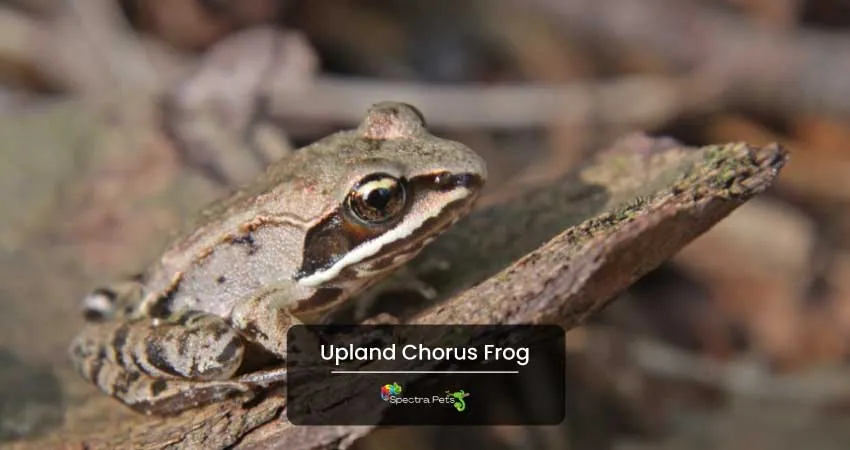
- Family: Hylidae
- Scientific name: Pseudacris feriarum
- Size: up to 1.75 inches
- Longevity: 0 to 5 years
- Price in U.S. Market: n/a
The Upland Chorus Frog is another species of chorus frog living in Maryland. This subspecies is one of the more commonly found tree frogs in the state.
Appearance:
- The body is usually gray or brown, but can also adapt a shade of a wide variety.
- Between the eyes, you can spot a blackish triangular shape.
- These creatures have a slightly thicker appearance than the New Jersey variant.
- Their underbelly is colored off-white.
Habitat:
- This frog can adapt to most habitational situations, and prefer shallow water, hayfields, and woodlands.
- They are more common along the western shore of Maryland.
8. Spring Peeper
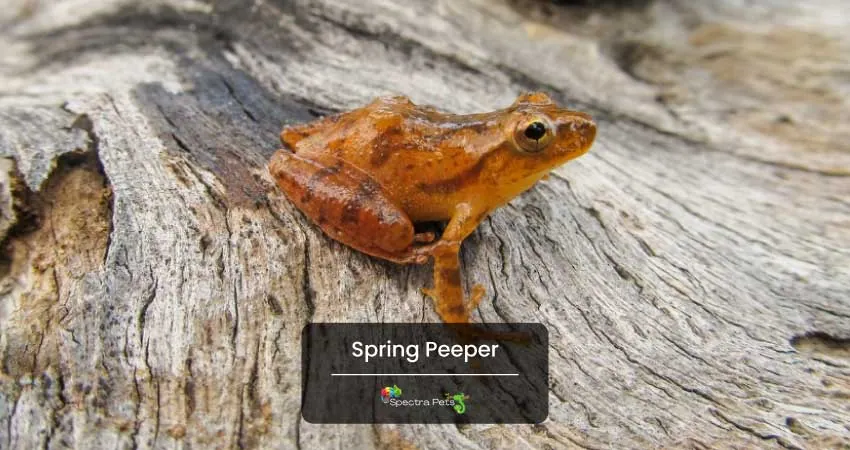
- Family: Hylidae
- Scientific name: Pseudacris crucifer
- Size: up to 1.25 inches
- Longevity: 2 to 4 years
- Price in U.S. Market: up to 20$
Spring Peepers have their name because they are the species that emerge the earliest from winter hibernation. In early springtime, you can hear these frogs chorusing together.
Appearance:
- These anurans have an olive, brown, or gray upper body.
- Its trademark feature is an “X” shape directly on its back.
- This frog changes its appearance based on the environment.
- Its toes have sticky pads that aid tree climbing.
Habitat:
- This species prefers pools, swamps, ponds, and marshes.
- It is a pretty common frog in Maryland. It can be easily located throughout the whole state.
9. Eastern Cricket Frog
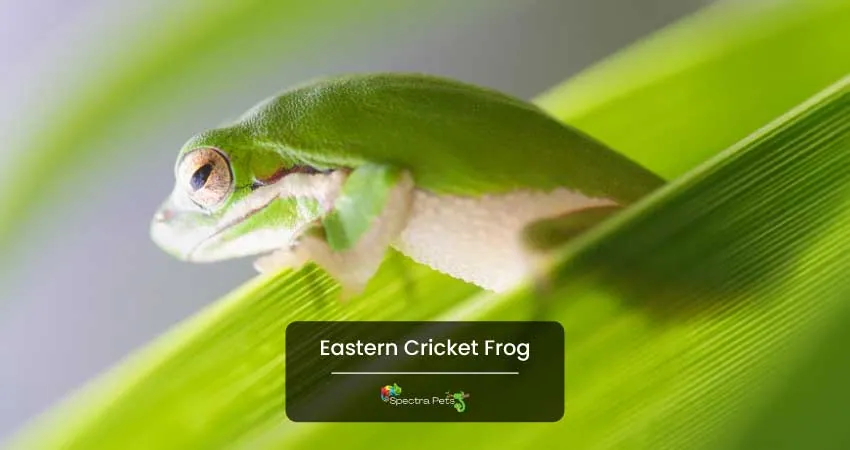
- Family: Hylidae
- Scientific name: Acris crepitans
- Size: from 0.6 to 1.75 inches
- Longevity: up to 2 years
- Price in U.S. Market: about 10$
The Eastern Cricket Frog is one of the smallest species of tree frogs found in Maryland and the whole of North America. Despite being a tree frog, this species does not climb and prefers the waterside.
Appearance:
- These amphibians are very small and have warty skin. Their body color is vastly variable and is dependent on the environment.
- They have dark lines across their thighs. Also, there is a dark triangular shape between the eyes.
Habitat:
- This species prefers shallow ponds with floating vegetation on them.
- They can be seen in most parts of Maryland.
Are Maryland Tree Frogs poisonous?
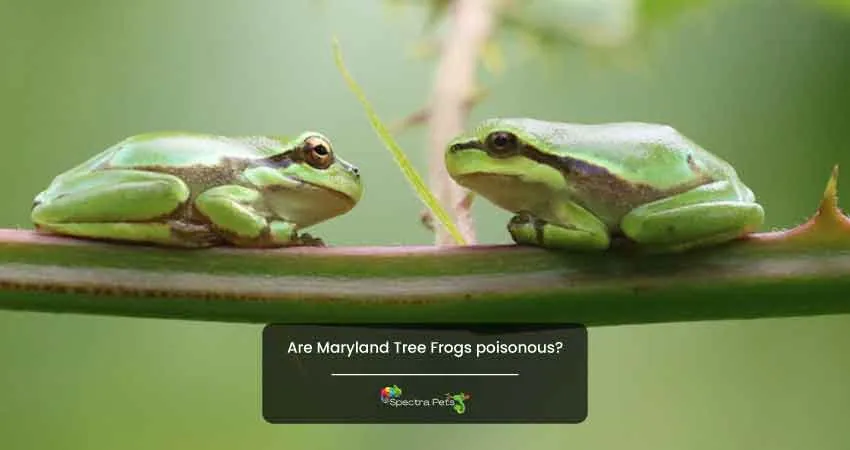
Tree frogs are not poisonous animals. There have been no reports of a poisonous tree frog species being found in the state of Maryland as of yet.
Wrapping Up
There are many different types of tree frog species in Maryland and the surrounding coastal area. Amongst them, there are two particular species that are endangered. This should be a point of concern and the Maryland Wildlife authority needs to pay attention to this before it’s too late.
Tree Frogs Found in the Nearby States of Maryland:
